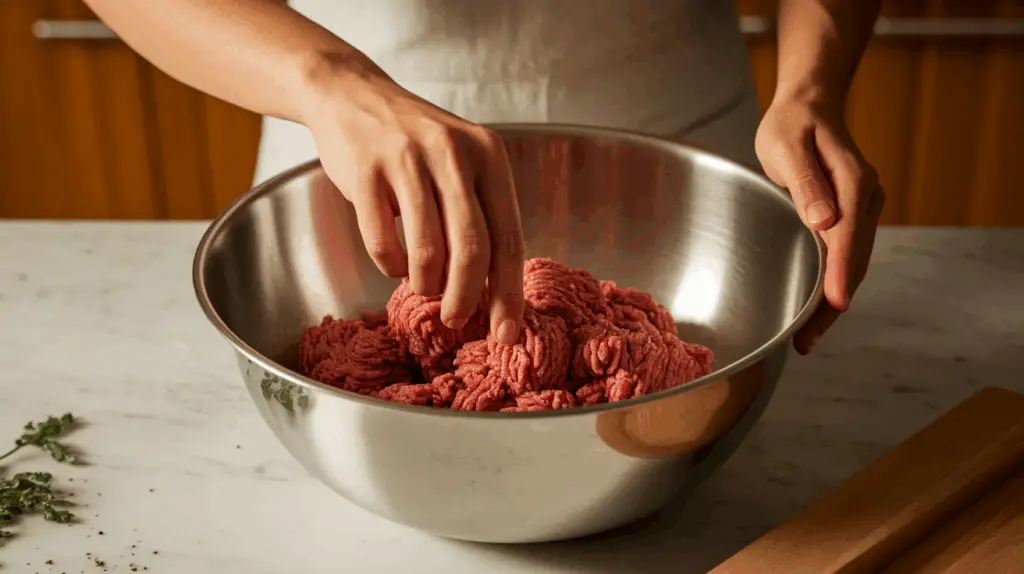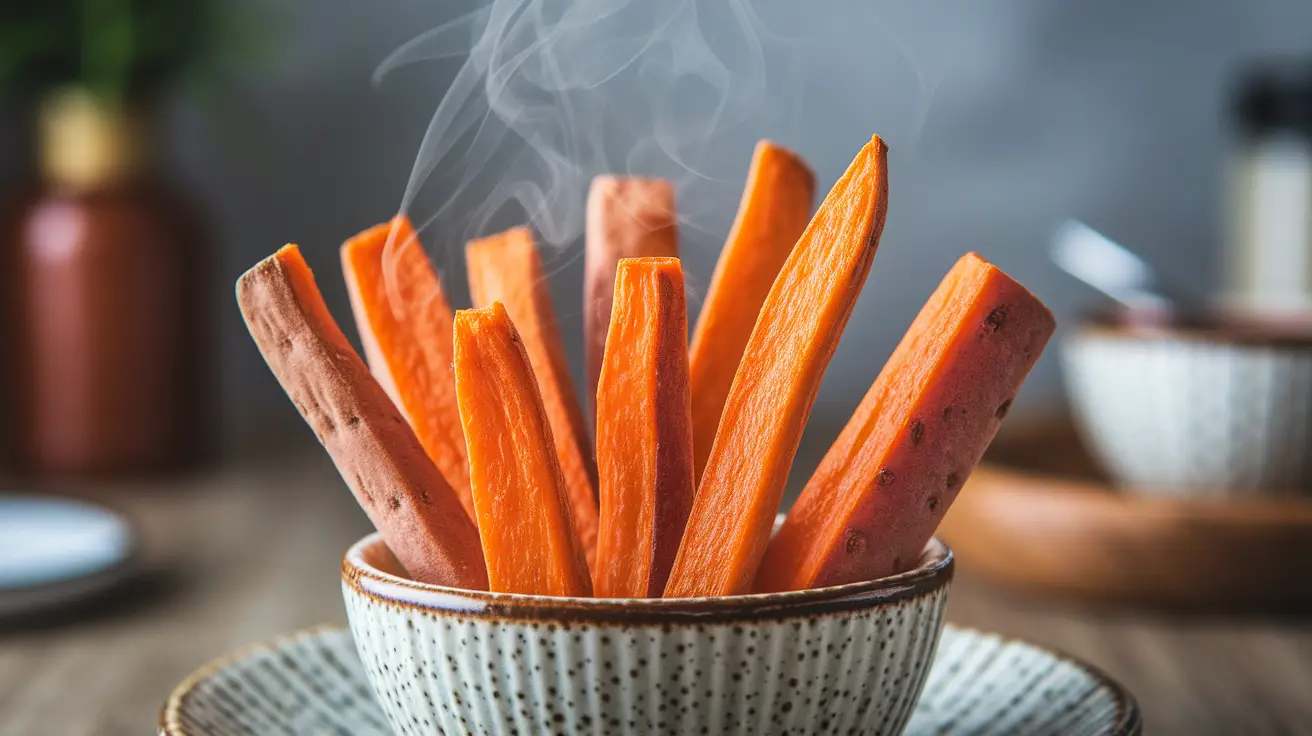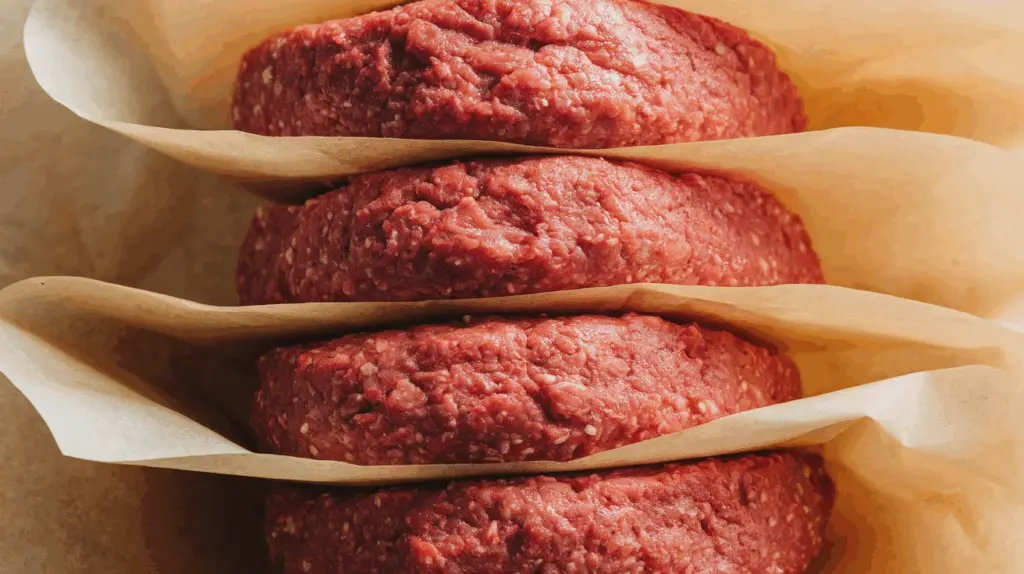Alright, my fellow burger enthusiast, let’s talk patties. The burger. It’s more than just a meal; it’s a culinary icon, a backyard barbecue staple, and the ultimate comfort food. But let’s be honest, you’ve probably had your share of sad, dry, or crumbly burger patties, right? The kind that falls apart on the grill, shrinks into oblivion, or just tastes… like nothing. My early attempts at crafting a homemade burger often resulted in something resembling a bland hockey puck, leaving me wondering why my burgers never lived up to restaurant standards. Sigh, I wish I could learn how to make the perfect burger patties.. But I’ve learned the secrets, battled the bulge, and discovered that mastering how to make a burger patty is simpler than you think, and it completely transforms your burger game. If you’re ready to create juicy, flavorful, and perfectly shaped ground beef patties that will make your taste buds sing, then pull up a chair. We’re about to unlock the secrets to the best burger patty!
Why Homemade Burger Patties Reign Supreme?
Why go through the “trouble” of shaping your own patties when you can buy them pre-made? Oh, my friend, that’s like comparing a pre-packaged mix to a gourmet dish! The difference in taste, texture, and satisfaction is immense. Crafting your own burger meat blend gives you ultimate control and superior results.
Here’s why I’m convinced homemade patties are the only way to go for truly gourmet burgers:
- Ultimate Flavor Control: You decide what goes into your patty. From the type of meat to the seasonings, you create a flavor profile tailored exactly to your preference. No mystery ingredients here!
- Perfect Texture: essential for creating the perfect hamburger. You control how tightly packed the meat is. This is crucial for a tender, juicy meat patty that doesn’t feel like a dense brick. It’s the secret to a great mouthfeel for a perfect hamburger.
- Quality Ingredients: You select the freshest, highest-quality ground meat. This leads to a safer, more delicious homemade ground beef patty every single time.
- Cost-Effective: Buying ground beef in bulk and making your own patties is often more economical than purchasing pre-formed ones. It’s an affordable meal option that still feels indulgent.
- Unbeatable Freshness: Freshly made patties, seasoned just before cooking, simply taste better. This means a more flavorful beef burger experience.
- Custom Sizing: Want a super thick steakhouse burger? Or a thin, crispy smash burger? You dictate the size and thickness for your perfect burger meal.
The Foundation: Choosing Your Ground Meat Wisely
The type and quality of your ground meat are the single most important factors for a great burger. This is the bedrock of your burger creation.
Fat Content: The Key to Juiciness
This is perhaps the most critical decision you’ll make. Fat equals flavor and, more importantly, juiciness.
- 80/20 Ground Chuck (80% lean, 20% fat): This is my undisputed champion for the best burger patty. The 20% fat content is ideal for a good hamburger. It renders down during cooking, keeping the patty moist and flavorful, preventing a dry, sad beef burger. This is the secret to a truly juicy result when following a perfect hamburger recipe.
- 85/15 Ground Chuck: Still good, a bit leaner, will yield a slightly less juicy burger.
- 90/10 (or leaner) Ground Beef: Avoid these for burgers! They are too lean and will result in dry, crumbly patties unless you add extra fat or moisture. Save them for chili or tacos.
Type of Ground Beef: Flavor Profile Matters
While chuck is my top pick, different cuts offer nuanced flavors.
- Ground Chuck: Comes from the shoulder. Excellent beefy flavor and good fat distribution. Perfect for classic beef burger patties.
- Ground Sirloin: Leaner (typically 90/10 or 92/8). Good flavor, but needs careful handling to avoid dryness in your hamburger patty recipe. Mix with fattier cuts for a blend.
- Ground Round: Even leaner (90/10 or 85/15). Similar to sirloin, best mixed with fattier options for homemade hamburger patties.
Beyond Beef: Exploring Other Meats
While beef is king for burgers, don’t limit yourself! You can make fantastic patties from other meats.
- Ground Turkey: For turkey burgers, choose 85/15 or 90/10 for moisture. It’s leaner, so you might need to add moisture (like grated onion or zucchini) or a bit of olive oil.
- Ground Chicken: Similar to turkey, often very lean. Requires extra seasoning and moisture for a flavorful chicken burger.
- Ground Pork: a great alternative for a delicious hamburger patty recipe. Can add richness and different flavor profiles, often mixed with beef.
- Veggie Burgers: A whole different ball game, but equally delicious!
Seasoning Secrets: Elevating Flavor Beyond Basic Salt & Pepper
This is where you infuse personality into your burger meat. Less is often more, but you can certainly get creative!
The Purest Form: Salt and Pepper Only
For true beef lovers, a simple approach often yields the best burger seasoning.
- Coarse Salt (Kosher or Sea Salt): Sprinkle generously on the outside of the patty just before cooking. Salting too early can draw out moisture, leading to a drier burger.
- Freshly Ground Black Pepper: Adds a sharp, fresh bite.
Beyond the Basics: Adding Depth
If you want to create a more complex flavor profile for your flavorful burger mix, consider these common additions:
- Garlic Powder & Onion Powder: These fine powders distribute evenly and add a subtle, savory background without the raw bite of fresh onion or garlic. About 1/2 teaspoon each per pound of meat.
- Smoked Paprika: Adds a beautiful color and a subtle smoky depth.
- Worcestershire Sauce: A few dashes add umami and tang. Mix it gently into the meat.
- Other Spices: Cumin for a Tex-Mex flair, dried oregano for Mediterranean notes, a pinch of chili powder for a slight kick.
The Binder Debate: To Add or Not to Add?
For a pure beef burger, you typically do not need a binder (like breadcrumbs or egg) if you use 80/20 ground chuck and handle it correctly. The fat acts as a natural binder.
- When to Use a Binder: If you’re using very lean ground meat (90/10+), or ground turkey/chicken, a beaten egg or a few tablespoons of breadcrumbs (or crushed crackers) can help bind the burger mix and add moisture, preventing a burger patty that falls apart.
Mixing Technique: Gentle Hands for Tender Patties
This is critical for a tender meat patty. Overmixing leads to a dense, tough texture.
- Place your ground meat in a large bowl.
- Sprinkle your seasonings evenly over the meat.
- Use very gentle hands (or a fork for minimal contact) to lightly combine the seasonings with the meat. Avoid squishing or compacting the meat. You want to work it just enough so the seasonings are distributed. This is the secret to a tender, juicy bite!
Shaping the Perfect Patty: Form for Function
The way you shape your burger patty directly impacts how it cooks and whether it bulges into a ball.
Size and Thickness: The Golden Ratio
- Size: Aim for a patty that is slightly wider than your burger bun (about 4-4.5 inches in diameter for a standard bun). Patties shrink significantly during cooking!
- Thickness: Make your patties about 3/4 to 1 inch thick is the ideal size for perfect hamburger patties.. This allows for a good sear while maintaining a juicy interior. For smash burgers, you would form a much looser ball and smash it thin on a hot griddle.
The Thumbprint Dimple: Your Anti-Bulge Secret
This is a pro tip for preventing hamburger hockey pucks when you learn how to make burgers!
- After you shape your patty, use your thumb (or the back of a spoon) to create a small indentation or dimple in the center of one side of the patty.
- Why it works: As the patty cooks, the meat proteins contract and the center tends to bulge upwards, making the burger round and uneven. The dimple helps counteract this, ensuring your perfect round patty cooks flat and evenly.
Preventing Cracks: Gentle Handling
- Don’t overwork the meat. If you’re having trouble with cracks, gently press the edges together.
- Ensure the meat is cold but not frozen when shaping.
Storing Your Patties: Prep Ahead for Convenience
Making patties ahead of time is a fantastic meal prep strategy, allowing for quick weeknight grilling or pan-frying. This is how to store burger patties for ultimate convenience.
Short-Term Storage: Fridge Ready
- Place shaped patties on a plate or baking sheet lined with parchment paper (to prevent sticking).
- Cover loosely with plastic wrap and refrigerate for up to 1 day.
Freezing for Later: Meal Prep Hero
This is ideal for longer storage. This makes freezing hamburger patties a breeze for future meals.
- Place shaped patties on a parchment-lined baking sheet, ensuring they don’t touch.
- Freeze for 1-2 hours, or until solid.
- Once frozen, stack the patties with a piece of parchment paper between each one.
- Transfer the stack to a freezer-safe zip-top bag or airtight container. Press out as much air as possible.
- Frozen patties will last for making delicious burger buns later. up to 3-4 months.
Cooking Your Masterpiece: Grill, Skillet, or Oven?
While this article focuses on the patty itself, knowing how to cook it perfectly is the final step in your burger journey.
Grilling: The Classic Char
- Pros: Iconic smoky flavor, beautiful grill marks.
- Method: Preheat grill to medium-high (400-450°F / 200-230°C). Cook 4-6 minutes per side for medium-rare, or until desired doneness (use a meat thermometer for the perfect burger patties)!).
Pan-Frying/Cast Iron Skillet: The Sizzle & Sear
- Pros: Incredible crust (sear), juicy interior. Great for indoor burger cooking.
- Method: Heat a cast iron skillet over medium-high heat until almost smoking. Add a tiny bit of oil. Cook patties 3-5 minutes per side for medium-rare.
Baking/Broiling: Oven-Baked Ease
- Pros: Hands-off, less mess. Good for cooking multiple patties at once.
- Method: Bake at 400°F (200°C) for 15-20 minutes, flipping halfway. Broil for a quick char.
Troubleshooting Common Patty Pitfalls
Even with the best techniques, challenges can arise. These burger patty fixes A good hamburger recipe will save your meal!
- Patty Crumbles/Falls Apart:
- Solution: You used too lean meat, or you didn’t compress it quite enough during shaping. If it’s too lean, gently add a binder (like an egg yolk or a tablespoon of breadcrumbs) next time, or choose fattier meat.
- Dry Burger:
- Solution: Overcooked! Use a meat thermometer to ensure proper doneness. You also might be using meat that’s too lean.
- Patty Bulges into a Ball (No Dimple):
- Solution: You forgot the thumbprint dimple! The center bulged as the proteins contracted. Remember that simple trick.
- Patty Shrinks Excessively:
- Solution: Overcooked, or too much fat rendered away too quickly. A dimple helps, as does a slightly lower cooking temperature to allow fat to render more slowly.
- Bland Taste:
- Solution: Not enough seasoning! Don’t be afraid to season generously, especially on the outside. Fresh pepper and coarse salt are key.
Frequently Asked Questions
- What kind of meat is best for burger patties? The best meat for burger patties is typically used in a good hamburger recipe. 80/20 ground chuck (80% lean, 20% fat). This fat content ensures a juicy, flavorful burger without being overly greasy.
- How do you season burger patties? To season burger patties, you primarily use coarse salt and freshly ground black pepper liberally on both sides just before cooking. You can also add garlic powder, onion powder, or a dash of Worcestershire sauce to the meat for more complex flavor.
- How thick should a burger patty be? A burger patty should typically be shaped to be 3/4 to 1 inch thick. This allows it to cook evenly and remain juicy in the center.
- How do you keep burger patties from falling apart? To keep burger patties from falling apart, use ground meat with adequate fat content (like 80/20 ground chuck), avoid overworking the meat when mixing, and shape the patties gently but firmly. If using very lean meat, a small amount of binder (like an egg yolk) can help.
- Should you put a dimple in a burger patty? Yes, you should put a thumbprint dimple in the center of one side of your burger patty. This prevents the patty from bulging up in the middle during cooking, ensuring it cooks flat and evenly.
- Can you freeze homemade burger patties? Yes, you can freeze homemade burger patties. Stack them with parchment paper between each patty, then store in a freezer-safe bag or airtight container for up to 3-4 months. Thaw in the refrigerator before cooking.
- Is it better to put seasoning in the burger meat or on the outside? For the most consistent flavor throughout the patty without compromising texture, it’s best to mix seasonings gently into the meat (like powders or Worcestershire). However, salt and pepper are crucial on the outside of the patty just before cooking to create a delicious crust.
Q: What is the best hamburger recipe for stovetop cooking?
A: The best hamburger recipe for stovetop cooking includes using high-quality ground beef, seasoning it with salt and pepper, and forming perfect homemade hamburger patties. Cook the burgers on the stovetop over medium heat for about 4-5 minutes per side for a juicy result.
Q: How do I make perfect homemade hamburger patties?
A: To make perfect homemade hamburger patties, shape the ground beef into disks, ensuring they are slightly larger than your hamburger buns. Make a slight indentation in the center of each patty to help them cook evenly and prevent puffing up.
Q: What is the ideal internal temperature for a good hamburger?
A: The ideal internal temperature for a good hamburger is 160°F (71°C) to ensure it is safely cooked through while remaining juicy. Use a meat thermometer to check the internal temperature of your patties.
Q: Can I make cheeseburgers with this burger recipe?
A: Yes, you can easily make cheeseburgers with this burger recipe. Simply place a slice of cheese on the patty during the last minute of cooking and cover it to melt the cheese perfectly.
Q: How do I cook burgers on the stovetop without drying them out?
A: To cook burgers on the stovetop without drying them out, avoid pressing down on the patties while they cook, as this releases juices. Also, ensure you do not overcook them, and consider using a meat thermometer to monitor the internal temperature.
Q: What are some favorite burger toppings I can use?
A: Some favorite burger toppings include lettuce, tomato, onion, pickles, cheese, bacon, avocado, and various sauces like ketchup, mustard, and mayonnaise. Customize your burgers with your favorite burger toppings for a delicious meal.
Q: Should I toast the buns for a perfect homemade hamburger?
A: Yes, toasting the buns adds texture and flavor to your perfect homemade hamburger. You can toast the buns on the stovetop in a skillet or under a broiler for a few minutes until golden brown.
Q: Can I use an air fryer to make the perfect stovetop burgers?
A: Yes, you can use an air fryer to make the perfect stovetop burgers. Preheat the air fryer and cook the patties according to your air fryer’s instructions, typically around 10 minutes at 375°F (190°C), flipping halfway through for even cooking.
Q: What makes a burger recipe the best homemade option?
A: A burger recipe is considered the best homemade option when it features high-quality ingredients, such as fresh ground beef, well-balanced seasoning, and the right cooking technique to achieve tender burgers with a flavorful crust.
Conclusion
So there you have it, my friend! The complete guide on how to make a burger patty that will turn you into a burger-making legend. No more dry disappointments or crumbly messes. You now possess the knowledge to choose the right meat, season it perfectly, and shape it for optimal juiciness and flavor. Go forth, fire up that grill or skillet, and prepare to bite into the best burger patty you’ve ever made. You’ve totally got this! 🍔🔥✨




